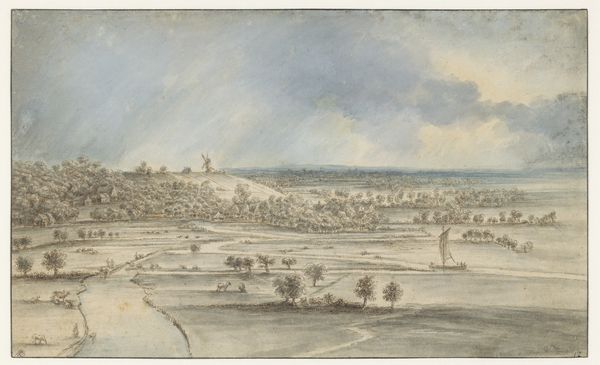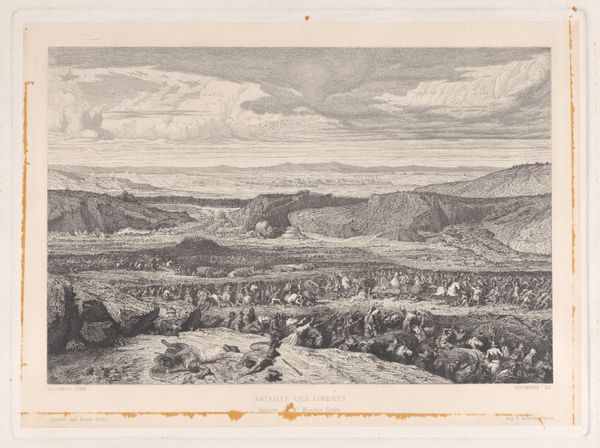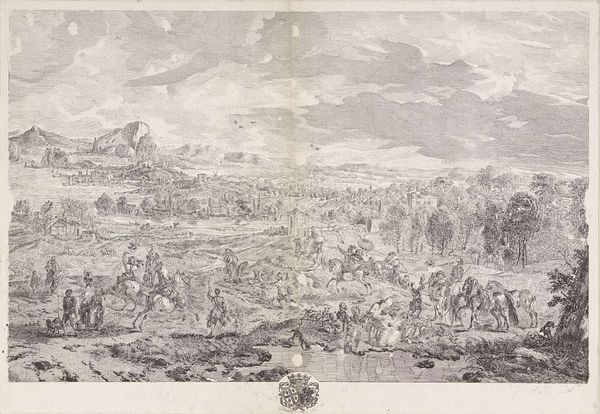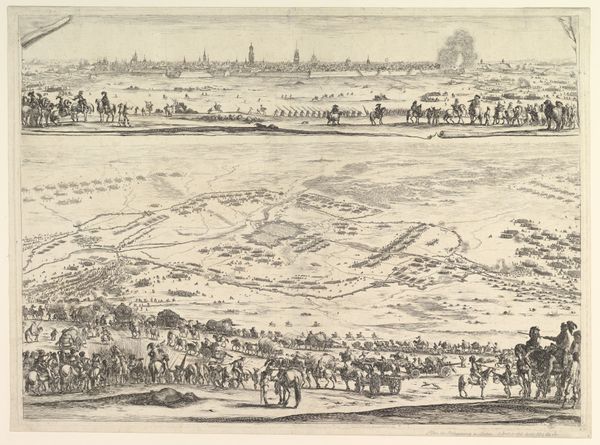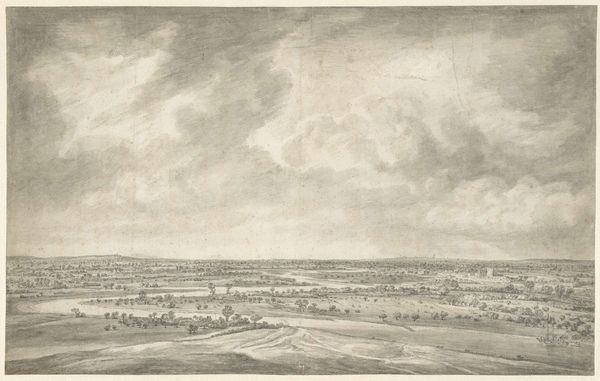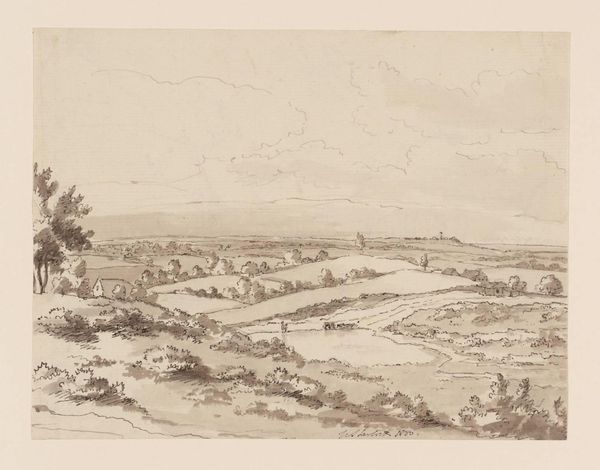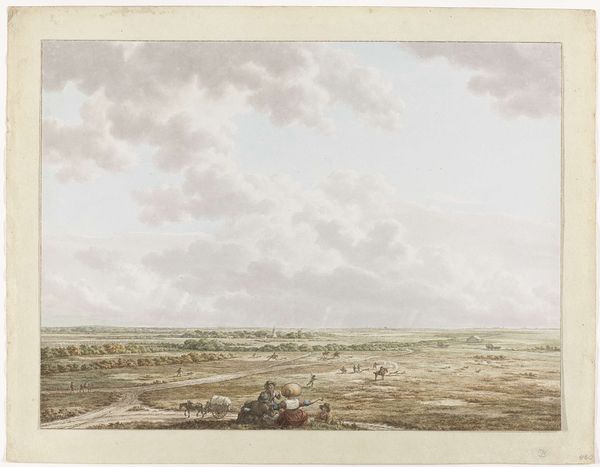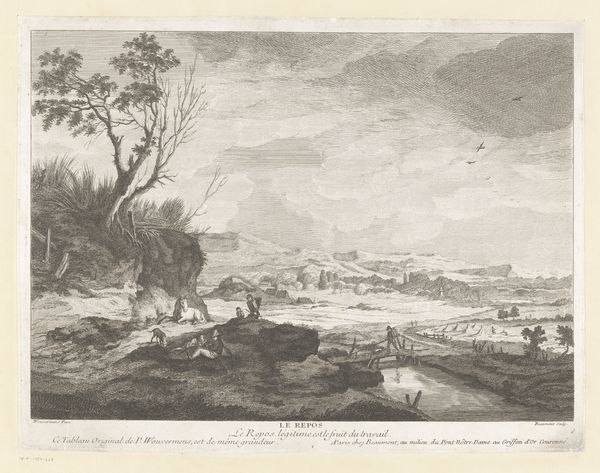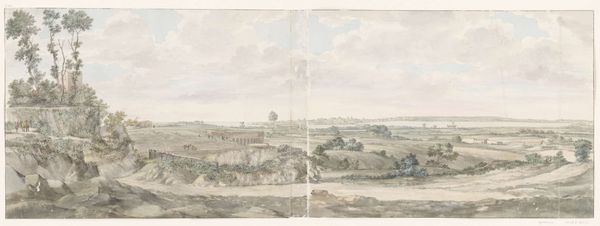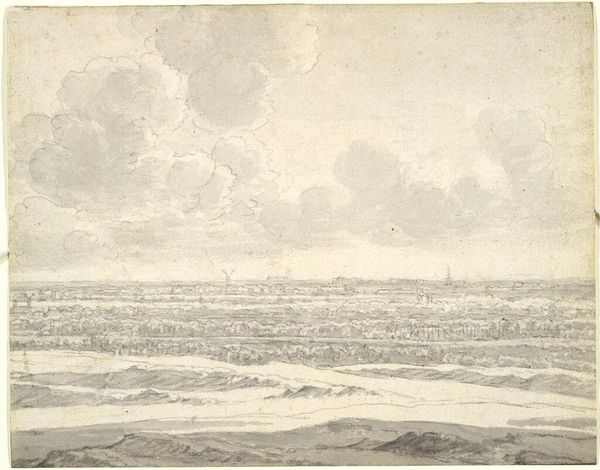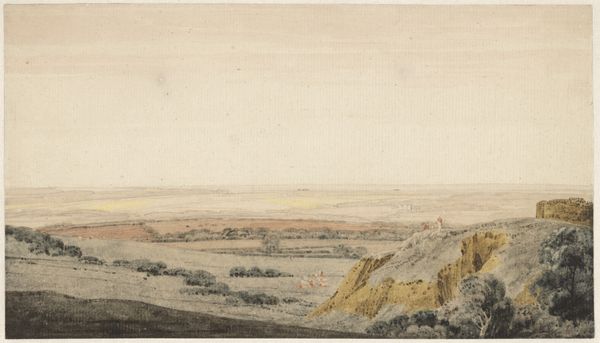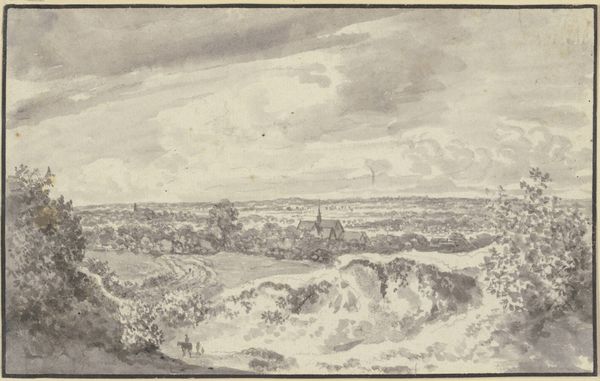
Dimensions: support: 200 x 319 mm
Copyright: CC-BY-NC-ND 4.0 DEED, Photo: Tate
Editor: So, this watercolor is titled "From Camberwell" by William Taverner. It captures a rather muted scene. What visual symbols do you think stand out in this piece? Curator: The muted tones evoke a sense of nostalgia, wouldn’t you agree? The horizon, almost a whisper, suggests a memory rather than a vivid present. What associations does the framing create for you, considering its period? Editor: I hadn't considered the memory aspect so strongly. The frame does give it a sense of being a preserved artifact. Curator: Precisely. The landscape becomes a cultural artifact, holding within it the weight of the past, a collective memory of a place and time. Its power lies in its understatement, inviting contemplation. Editor: I see that now, how the artist uses subtlety to convey such a strong sense of place and history. Curator: Indeed. And through understanding that, we unlock the emotional core of the piece.
Comments
tate 7 months ago
⋮
http://www.tate.org.uk/art/artworks/taverner-from-camberwell-t08275
Join the conversation
Join millions of artists and users on Artera today and experience the ultimate creative platform.
tate 7 months ago
⋮
William Taverner holds a special place in the history of British drawing, being remembered today as 'our first regular and systematic painter of free landscape in watercolour'. In addition to imaginary, Italianate landscapes (no.7), he also painted more informal views of the English countryside. This example has a breadth and a freedom of execution which, together with its naturalistic palette, suggests that it may well have been painted on the spot. There are few precedents in British watercolour for such unadorned transcripts of nature as this study. Gallery label, September 2004

